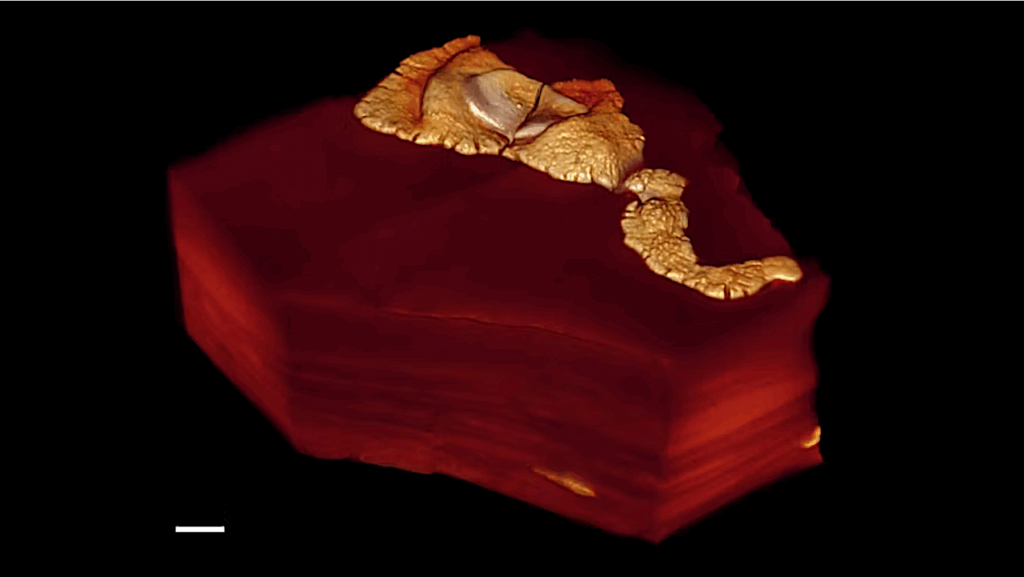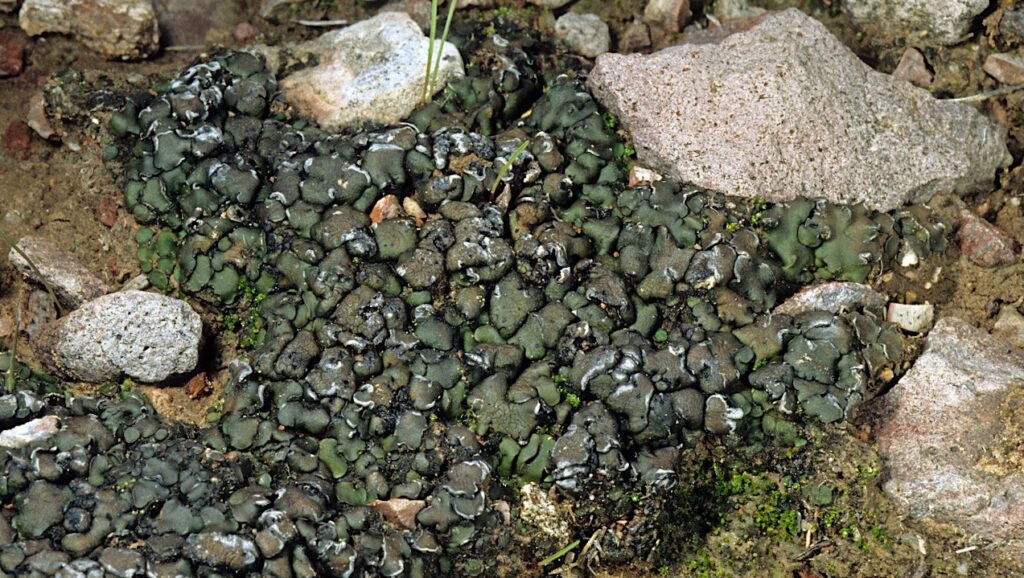Earth's Crust Mineralogy Drives Hotspots For Intraterrestrial Life

Below the verdant surface and organic rich soil, life extends kilometers into Earth’s deep rocky crust. The continental deep subsurface is likely one of the largest reservoirs of bacteria and archaea on Earth, many forming biofilms – like a microbial coating of the rock surface.
This microbial population survives without light or oxygen and with minimal organic carbon sources, and can get energy by eating or respiring minerals. Distributed throughout the deep subsurface, these biofilms could represent 20-80% of the total bacterial and archaeal biomass in the continental subsurface according to the most recent estimate. But are these microbial populations spread evenly on rock surfaces, or do they prefer to colonize specific minerals in the rocks?
To answer this question, researchers from Northwestern University in Evanston, Illinois, led a study to analyze the growth and distribution of microbial communities in deep continental subsurface settings. This work shows that the host rock mineral composition drives biofilm distribution, producing “hotspots” of microbial life. The study was published in Frontiers in Microbiology.
Hotspots of microbial life
To realize this study, the researchers went 1.5 kilometers below the surface in the Deep Mine Microbial Observatory (DeMMO), housed within a former gold mine now known as the Sanford Underground Research Facility (SURF), located in Lead, South Dakota. There, below-ground, the researchers cultivated biofilms on native rocks rich in iron and sulfur-bearing minerals. After six months, the researchers analyzed the microbial composition and physical characteristics of newly grown biofilms, as well as its distributions using microscopy, spectroscopy and spatial modelling approaches.
The spatial analyses conducted by the researchers revealed hotspots where the biofilm was denser. These hotspots correlate with iron-rich mineral grains in the rocks, highlighting some mineral preferences for biofilm colonization. “Our results demonstrate the strong spatial dependence of biofilm colonization on minerals in rock surfaces. We think that this spatial dependence is due to microbes getting their energy from the minerals they colonize.” explains Caitlin Casar, first author of the study.
Future research
Altogether, these results demonstrate that host rock mineralogy is a key driver of biofilm distribution, which could help improve estimates of the microbial distribution of the Earth’s deep continental subsurface. But leading intraterrestrial studies could also inform other topics. “Our findings could inform the contribution of biofilms to global nutrient cycles, and also have astrobiological implications as these findings provide insight into biomass distributions in a Mars analog system” says Caitlin Casar.
Indeed, extraterrestrial life could exist in similar subsurface environments where the microorganisms are protected from both radiation and extreme temperatures. Mars, for example, has an iron and sulfur-rich composition similar to DeMMO’s rock formations, which we now know are capable of driving the formation of microbial hotspots below-ground.
###
About Desert Research Institute (DRI)
DRI is a recognized world leader in basic and applied interdisciplinary research. Committed to scientific excellence and integrity, DRI faculty, students, and staff have developed scientific knowledge and innovative technologies in research projects around the globe. Since 1959, DRI’s research has advanced scientific knowledge, supported Nevada’s diversifying economy, provided science-based educational opportunities, and informed policy makers, business leaders, and community members. With campuses in Reno and Las Vegas, DRI serves as the non-profit research arm of the Nevada System of Higher Education. For more information, please visit ?http://www.dri.edu.
Rock-Hosted Subsurface Biofilms: Mineral Selectivity Drives Hotspots for Intraterrestrial Life, Frontiers In Microbiology
Astrobiology








